Zine – to March
Clandestine Life of the BoycottGiiirls!
2017
Corner College Press, 2017 / 2018
Kochstrasse 1, 8004 Zürich
www.corner-college.com
cornercollege@gmail.com
Contributions by Tonjaschja Adler, Madeleine Amsler & Vana Kostayola, Ariane Andereggen, Nicole Bachmann, Martina Baldinger, Nadja Baldini, Mirjam Bayerdörfer, Marina & Nelly Belobrovaja, Sofia Bempeza, Denise Bertschi, Ursula Biemann, Klara Borbély, Johanna Bruckner, Patricia Bucher, Sarah Burger, Françoise Caraco, Bettina Carl, Delphine Chapuis Schmitz, Teresa Chen, Marie‑Antoinette Chiarenza, data | Auftrag für parasitäre* Gastarbeit, Brigitte Dätwyler, Kadiatou Diallo, Bettina Diel, Mo Diener, Quynh Dong, Marianne Engel, Klodin Erb, Anne-Laure Franchette, Anna Francke, Füsun IPEK, Monica Germann, Clare Goodwin, Co Gründler, Gabriela Gründler, Sabine Hagmann, Marianne Halter, Andrea Heller, Samia Henni, Seda Hepsev, Anke Hoffmann, Cathérine Hug, Patricia Jacomella, Monica Ursina Jäger, Sophie Jung, Anastasia Katsidis, Yasmin Kiss, Sandra Knecht, Verica Kovacevska, Isabelle Krieg, Sandra Kühne, Georgette Maag, Julia Marti, Federica Martini & Petra Elena Köhle, Angela Marzullo, Mickry 3, Maya Minder, Rayelle Niemann, Caroline Palla, Ursula Palla, Katherine Patiño Miranda, Leila Peacock, Linda Pfenninger, Cora Piantoni, Annaïk Lou Pitteloud, Maria Pomiansky, Elodie Pong, Isabel Reiss, Marion Ritzmann, Ana Roldán, Aoife Rosenmeyer, Dorothea Rust, Eliane Rutishauser, Margit Säde, Saman Anabel Sarabi, Julie Sas, Lisa Schiess, Annette Sense, Dimitrina Sevova, Francisca Silva, Veronika Spierenburg, Vreni Spieser, Claudia Spinelli, Marion Strunk, Milva Stutz, Una Szeemann, Lena Maria Thüring, Yota Tsotra, Jana Vanecek, Anne Käthi Wehrli, Nives Widauer, Martina‑Sofie Wildberger, Angela Wittwer, Sophie Yerly
Zinesters / editors: Nadja Baldini, Dimitrina Sevova & Tanja Trampe
Prepress by code flow / Dimitrina Sevova & Alan Roth
ISBN 978-3-033-06183-5
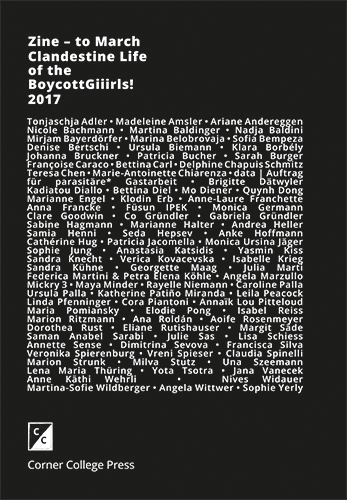
Cover of the Zine – to March. Clandestine Life of the BoycottGiiirls! 2017. Design: code flow
[Deutsch unten]
Make her voice heard!
The Zine – to March, Clandestine Life of the BoycottGiiirls is an artistic response to the International Women’s Day 2017 that came in a highly turbulent global situation and was one of the most political International Women’s Days. We have found ourselves in our localities sensing translocally. With the Zine we catch an “atmospheric flux,” undertake an experiment in “how to get taken up by the motion of a big wave” of women’s protest on a global scale. We want to move instead of being ordered into something. We want to do something in common, to come together, being many and so different, to make feminist media urgent and her voice heard. This collective action needs continuously to return in order to be reinvented and raise collective awareness with the agency of political, social and aesthetic ecologies of coexistence. Women’s liberation movements and feminist politics nowadays mean a liberation of all living forms, human and non-human, an other politics regarding even the rights of the inorganic.
The idea of the Zine came spontaneously and with immediacy. It turns the process of inviting women artists to contribute, into an intervention across time and space. For us the Zine is an event in itself that links us together and generates a collective body immanent-transcendent in its pages as a political and aesthetic living subjectivity. This body engages to create new relations and a new space of (under)commoning. The title brings together the public and the clandestine side of artistic practices. It reconnects work, fiction and life and aims to re-desire the feminist mantra: the personal is political. At the same time it paraphrases the Riot Grrrls in their desire to connect Punk and Feminism, and plays, in a kind of linguistic trick, with what the BoycottGiiirls want: to put Art back into Feminism and Feminism into Art!
This collection brings together contributions by ninety-four women artists, theoreticians and curators who encounter each other personally day-to-day. All of us take part in the so-called local art milieu. Due to the limited space of the printed pages and the limited time of its preparation we could not include many more great women artists. Indeed, the collection has conceptually to remain incomplete and ready to be reopened. We are aware that there is something anachronistic in the use of printed matter in post-digital times, but the volume of a book makes us feel the materiality of our collaboration in our hands as we handle its production and dissemination.
With the Zine we are platforming not as a singular collective or an exclusive group, but call for a more open collectivity and commonality in the field of vision. It is about how we imagine the coalescence of women artists, who are at the same time workers, mothers, housewives, colleagues and friends, in an informal and temporal alliance, conscious to demand a new attitude towards paid and unpaid (artistic) work and to commit to supporting each other in our daily life and work. Therefore, we have to connect art work and work in art to the movements of working women and a precarious workforce, and look for broader cooperation and solidarity between us. We need to invent a new space of participation out of the collaborative energy and time contributed freely to each other.
The Zine was initiated on the backdrop of the 100 years’ anniversary of the Russian Revolution, which is a good occasion to recall the grassroots memory and remember that it was dissent and revolts that culminated in the October Revolution. It is important to say that the events started with a strike by women textile workers on 8 March (on International Women’s Day, which took place on 23 February according to the Julian calendar in use in Russia at the time) who flooded the streets of Petrograd asking for peace and bread and the end of the World War I. Supported by the workers in the nearby factories, their protest quickly turned into a mass strike. The revolt of textile workers breaks monolithic and hegemonic history, but was later omitted from the (grand) narrative. Alexandra Kollontai, a passionate revolutionary and later activist of the Workers’ Opposition of the Communist Party, wrote about the textile workers and their uprising on 8 March but then, curiously, they disappeared from the history of the event.
The year 2018, when we release the Zine, coincides with another anniversary, this time in the West: the workers’ and students’ revolution of 1968. The democratic revolution of May ’68 was said to be an impossible revolution, a revolt against authority, patriarchy and political parties, but it was also a furious search for love, happiness and social togetherness.
That is why we like to repeat with Julia Kristeva, who reflects on these revolutionary events and women’s position in them in Revolt, she said!
Political revolutions ultimately betray revolt because they cease to question themselves. Revolt, as I understand it – psychic revolt, analytic revolt, artistic revolt – refers to a permanent state of questioning, of transformations, an endless probing of appearances. (Julia Kristeva)
Because of this we want to say that art is revolt! Other politics, she said! Our permanent feminist art revolt has just begun.
With care and love
Your zinesters: Dimitrina, Nadja, Tanja
[English above]
Make her voice heard!
Das Zine – to March, Clandestine Life of the BoycottGiiirls ist eine künstlerische Antwort auf den Internationalen Frauentag von 2017. Dieser fand in einer global turbulenten Situation statt und war einer der politischsten Frauentage überhaupt: Wir haben an den je eigenen Orten translokal empfunden. Mit der Herausgabe des Zine wollen wir diesen «atmosphärischen Fluss» einfangen, indem wir das Experiment wagen und erproben, «wie man von der Bewegung einer grossen Welle» von Frauenprotesten im globalen Massstab «erfasst wird». Wir wollen uns bewegen und nicht in etwas hineingedrängt werden. Wir wollen zusammenkommen, etwas Gemeinsames tun, Viele sein und zugleich verschieden, wollen feministische Medien dringlich und ihre Stimme hörbar machen. Dieses kollektive Handeln muss ständig wiederkehren, um neu erfunden zu werden und kraft der politischen, sozialen und ästhetischen Koexistenzökologien ein kollektives Bewusstsein zu schaffen. Frauenbefreiungsbewegungen und feministische Politik bedeuten heutzutage eine Befreiung aller lebenden Formen – menschlicher und nicht-menschlicher –, eine andere Politik, die selbst die Rechte des Anorganischen mit einschliesst.
Auf die Idee des Zine kamen wir spontan und unmittelbar. Es verwandelt den Prozess des Einladens der Künstlerinnen in eine Intervention durch Zeit und Raum. Für uns ist das Zine ein Ereignis an sich, das uns verbindet und einen kollektiven Körper erzeugt, der den Heftseiten als politische und ästhetische lebende Subjektivität immanent-transzendent ist. Dieser Körper lässt sich darauf ein, neue Beziehungen zu schaffen und einen Raum des (Under)commoning zu erzeugen. Der Titel selbst verschränkt öffentliche und klandestine Seiten künstlerischer Praxis. Er verbindet Arbeit, Fiktion und Leben und zielt darauf ab, das Begehren des feministischen Mantras wieder zu erwecken: Das Persönliche ist politisch. Gleichzeitig paraphrasiert er die Riot Grrrls in ihrem Bestreben, Punk und Feminismus zu verbinden, und spielt mit einer Art linguistischem Trick mit den Absichten der BoycottGiirls: die Kunst zurück in den Feminismus, und den Feminismus in die Kunst zu bringen!
Das Zine vereint Beiträge von 94 Künstlerinnen, Theoretikerinnen und Kuratorinnen, die alle am sogenannten lokalen Kunstmilieu teilnehmen und einander auch im Alltag immer wieder persönlich begegnen. Aufgrund des begrenzten Umfangs gedruckter Seiten und der limitierten Produktionszeit konnten wir leider viele weitere hervorragende Künstlerinnen nicht zur Teilnahme einladen. Tatsächlich soll die Sammlung konzeptionell unvollständig bleiben und ist damit frei, erneut geöffnet zu werden. Im Bewusstsein, dass der Verwendung von Gedrucktem in postdigitalen Zeiten etwas Anachronistisches anhaftet, materialisiert das physische Volumen des Buches unsere Zusammenarbeit und lässt uns diese in unseren Händen fühlen, während wir uns um die Produktion und Verbreitung kümmern.
Mit dem Zine treten wir nicht als singuläres Kollektiv oder exklusive Gruppe auf, sondern verfolgen eine offenere Kollektivität und Gemeinschaftlichkeit im Feld des Visuellen. Es geht darum, wie wir uns ein Zusammenwachsen von Künstlerinnen, die gleichzeitig Arbeiterinnen, Mütter, Hausfrauen, Kolleginnen und Freundinnen sind, in ein informelles und zeitliches Bündnis vorstellen, um bewusst eine andere Haltung gegenüber bezahlter und unbezahlter (künstlerischer) Arbeit einzufordern und uns darauf zu verpflichten, uns gegenseitig im alltäglichen Leben und bei der Arbeit zu unterstützen. Diese Haltung erfordert, dass wir die Kunst und das Arbeiten in der Kunst mit den Bewegungen berufstätiger Frauen und mit anderen prekären Arbeitskräften verbinden und eine breitere Kooperation und Solidarität anstreben. Es muss darum gehen, aus der kollaborativen Energie und der Zeit, die wir freiwillig miteinander teilen, einen neuen Raum der Teilhabe zu erfinden.
Das Zine wurde 2017 vor dem Hintergrund des 100-jährigen Jubiläums der Russischen Revolution initiiert. Eine gute Gelegenheit, das Graswurzel-Gedächtnis abzurufen und sich zu vergegenwärtigen, dass es Widerspruch und Revolten waren, die schliesslich in der Oktoberrevolution gipfelten. Dabei ist es wichtig zu erwähnen, dass die Ereignisse mit einem Streik von Textilarbeiterinnen am 8. März 1917 begannen (am Internationalen Frauentag, der gemäss dem damals in Russland gebräuchlichen Julianischen Kalender der 23. Februar war). Die Streikenden fluteten die Strassen des damaligen Petrograd und forderten Frieden, Brot und das Ende des Ersten Weltkriegs. Unterstützt von den Arbeiter_innen in den nahe gelegenen Fabriken, verwandelte sich der Protest schnell in einen Massenstreik. Die Revolte der Textilarbeiterinnen brach so mit der monolithischen und hegemonialen Geschichtsschreibung, wurde aber später aus der grossen Erzählung weggelassen. Alexandra Kollontai, leidenschaftliche Revolutionärin und spätere Aktivistin der Arbeiter_innenopposition der Kommunistischen Partei, berichtete über die Textilarbeiterinnen und ihren Aufstand vom 8. März. Dieser jedoch verschwand danach seltsamerweise aus der offiziellen Geschichtsschreibung des Ereignisses.
Das Jahr 2018, in dem wir das Zine herausgeben, fällt ebenfalls mit einem Jahrestag zusammen, diesmal jedoch mit einem des Westens: der Arbeiter_innen- und Student_innenrevolte von 1968. Die demokratische Revolution von Mai ’68 wurde als eine unmögliche Revolution, als Revolte gegen die Autorität, gegen das Patriarchat und die politischen Parteien bezeichnet und war gleichzeitig eine rasende Suche nach Liebe, Glück und sozialer Zusammengehörigkeit.
Deshalb wiederholen wir gerne die Worte von Julia Kristeva, die in Revolt, she said! über diese revolutionären Ereignisse und die Position der Frauen innerhalb dieser reflektiert hat.
Politische Revolutionen verraten letztendlich die Revolte, weil sie aufhören, sich selbst in Frage zu stellen. Revolte, wie ich sie verstehe – psychische Revolte, analytische Revolte, künstlerische Revolte – bezieht sich auf einen permanenten Zustand der Befragung, der Transformationen – ein unaufhörliches Ergründen des Anscheins. (Julia Kristeva)
Aus diesem Grund sagen wir, Kunst ist Revolte! Other politics, she said! Unsere permanente feministische Kunstrevolte hat eben erst begonnen.
Mit Sorge und Liebe
Eure Zinesters: Dimitrina, Nadja, Tanja
Contributions
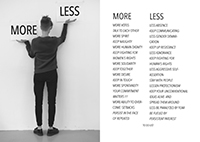
Tonjaschja Adler
More-Less
2017. Photograph and To Do List
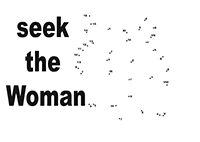
Madeleine Amsler & Vana Kostayola
seek the Woman
2017

Ariane Andereggen
Spiegelschreck / Zeichnung zur Weltlage
2017
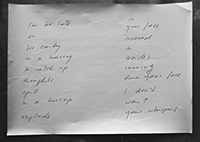
Nicole Bachmann
spill in a hiccup
2017. Pen on paper
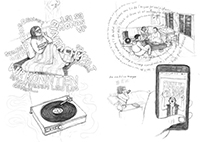
Martina Baldinger
Private Dancer
2017
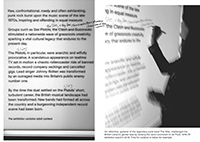
Nadja Baldini
What about the women!!
2017
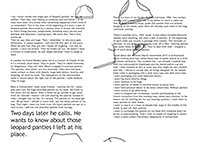
Mirjam Bayerdörfer
Hommage Charismatic Megafauna
2017
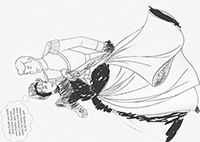
Marina & Nelly Belobrovaja
Ausmalbild «Cinderella» (Disney, 1950)
Filzstift, Buntstift, Graphit, digitale Bildbearbeitung
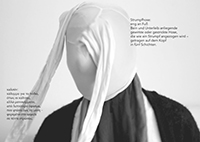
Sofia Bempeza
καλσόν listening to Telephone Arab
2017
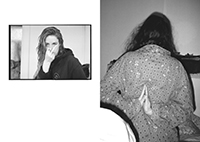
Denise Bertschi
Sisterhood
2017. Left: Denise Bertschi by Eliane Bertschi. Right: Gitte Hendrikx by Denise Bertschi
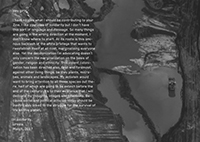
Ursula Biemann
Email to the publisher
March 2017
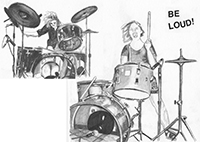
Klara Borbély
be loud!
2017. Bleistift auf Papier
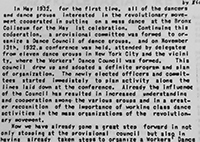
Johanna Bruckner
Extract from "Rebel Bodies"
2015-16 / 1930. Photo: Johanna Bruckner. Archivmaterial: Library of Congress, Washington DC
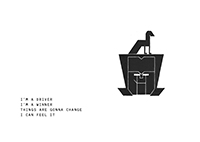
Patricia Bucher
o.T.
2017. Aquarell auf Papier
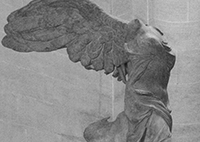
Sarah Burger
Depuis et pour (toujours)
2017
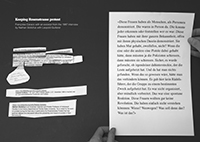
Françoise Caraco
Keeping Rosenstrasse-Protest
2017
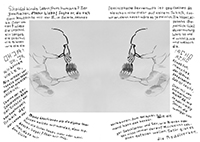
Bettina Carl
Prelude (To Bettina von Arnim) // Vorspiel (Für Bettina von Arnim)
2017. Watercolour and marker on paper, digitally processed // Aquarell und Filzstift auf Papier, digital bearbeitet
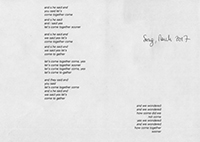
Delphine Chapuis Schmitz
2017
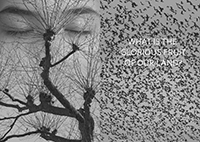
Teresa Chen
What is the glorious fruit of our land?
2017. Quote from PJ Harvey, "This Glorious Land" from Let England Shake (Album). Island Records, 2011
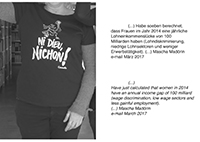
Marie-Antoinette Chiarenza, member of RELAX
2017. Photo: At the relax-studios with marie-antoinette chiarenza, maëlle cornut and sophie vögele. Text: E-mail Mascha Madörin at the relax-studios

data | Auftrag für parasitäre* Gastarbeit
JUICE
2017. Readymades (Abb.)
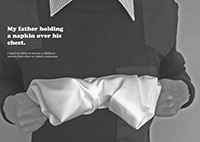
Brigitte Dätwyler
My father holding a napkin over his chest
2017. Performance für die Fotokamera
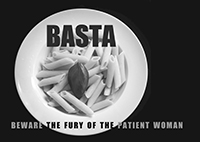
Kadiatou Diallo
Beware the fury of the patient woman
2017
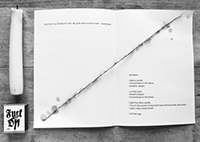
Bettina Diel
Quick alternative
2017
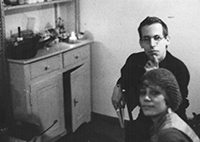
Mo Diener
Gulf War / 35 Nations led by US against Iraq, 1990
Kitchen at Nordstrasse, Zurich, 1990. © Mo Diener Archive
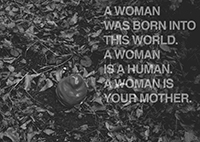
Quynh Dong
waiting for love
2017
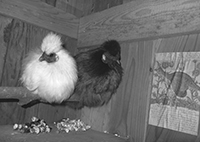
Marianne Engel
2017

Klodin Erb
Wiederaufforstung
2017. Graphit auf Papier, 21 × 29,7 cm
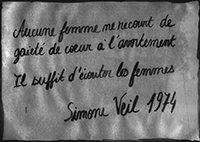
Anne-Laure Franchette
Il suffit d’écouter Simone
2017. Watercolor, photocopy machine
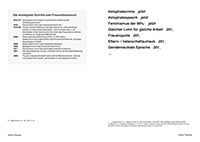
Anna Francke
2017
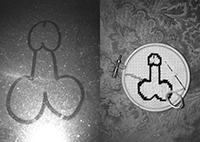
Füsun IPEK
Same Same but Different 01
2017. Street art photo & embroidery
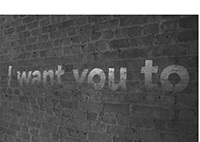
Monica Germann
I want you to
2017. Photo: Monica Germann
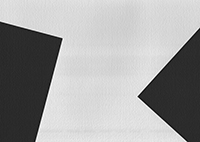
Clare Goodwin
When Harry Met Sally
2017. Acrylic on paper
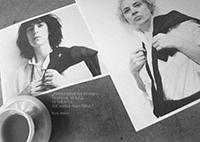
Co Gründler
Patty & Co.
2017
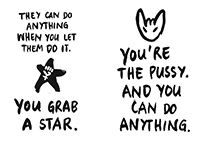
Gabriela Gründler
Make Trump’s Words Yours
2017. Original quote by Trump: "And when you’re a star they let you do it. You can do anything. Grab them by the p****. You can do anything."
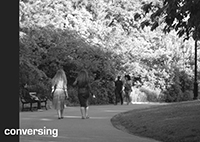
Sabine Hagmann
conversing
2017
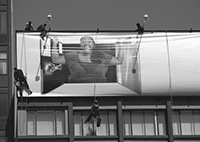
Marianne Halter
2017. Digitale Fotografie, retuschiert
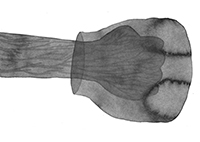
Andrea Heller
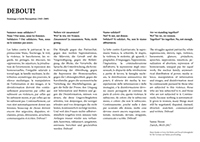
Samia Henni
Debout ! Hommage à Carole Russopulous (1945–2009)
08.03.2017
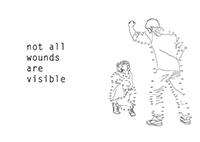
Seda Hepsev
Connect the Dots
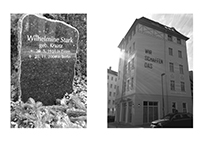
Anke Hoffmann
Berlin
2017

Cathérine Hug
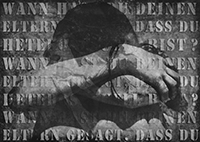
Patricia Jacomella Bonola
Wann hast du deinen Eltern gesagt, dass du heterosexuell bist?
2017. Digitale Fotocollage. Quelle: «Aktionstage gegen Sexismus und Homophobie», November-Dezember 2016, Dresden.
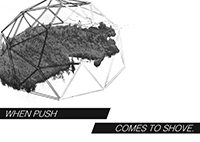
Monica Ursina Jäger
when push comes to shove
2017
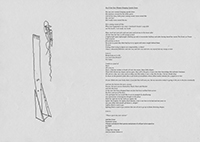
Sophie Jung
You’ll See Your Woman
2016/17. Blueprint for a sculpture, text and performance
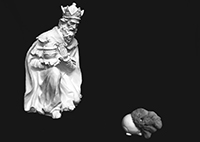
Anastasia Katsidis
queen
2017
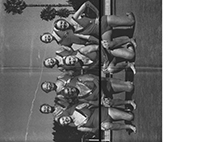
Yasmin Kiss
Aquadettes, Lagona Woods, CA (c. 2001)
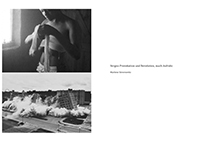
Sandra Knecht
ohne Titel
Abb. oben: Zanele Muholi, Arbeit, Sex ID Crisis. Abb. unten: U.S. Department of Housing and Urban Development, Office of Policy Development and Research. Das Grossprojekt des Sozialen Wohnungsbaus Pruitt–Igoe in St. Louis/Missouri existierte von 1955 bis Mitte der 1970er-Jahre. Ab Ende der 1960er war der Komplex mit 2’870 Wohnungen für seine Armut, Kriminalität und Rassentrennung international berüchtigt. Schliesslich wurden die 33 Gebäude gesprengt. Das Ereignis wurde am Fernsehen übertragen. Bis heute ist Pruitt–Igoe ein Symbol des politischen Scheiterns öffentlicher Stadtplanung. (Quelle: Wikipedia)
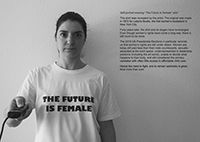
Verica Kovacevska
Self-portrait wearing "The Future is Female" shirt
2017
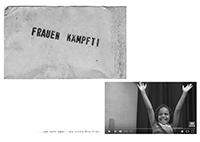
Isabelle Krieg
FRAUEN KÄMPFT LACHEND
2017. Bildquellen: Feministisches Agitprop-Post-it, späte 1990er/frühe 2000er-Jahre, Luzern/Zürich; Little Miss Flint, Youtube-Videostill, 2016 (abcnews.go.com/WNT/video/miss-flint-tells-david-muir-hugging-president-obama-38944410)
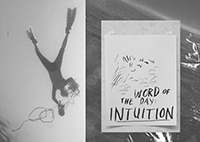
Sandra Kühne
Intuition
2017. Unterwasserfotos und Tusche auf Papier

Georgette Maag
Wandeln
2014. Videostill
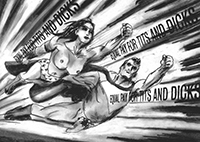
Julia Marti
Equal Pay for Tits and Dicks
2017
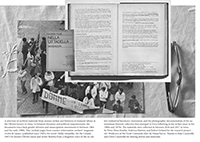
Federica Martini and Petra Elena Köhle
Selection of archival materials from women strikes and histories of women’s labour at the Olivetti factory in Ivrea
As part of the research project Art Work(ers) of the Ecole Cantonale d’art du Valais/Sierre. Thanks to Italo and Cleto Cossavella for sharing stories and materials.
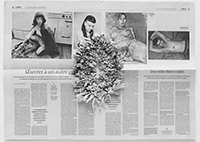
Angela Marzullo
MAKITA l’origine
2017. Hors serie. Journal Le Monde, samedi, 8 mars 2014. Photo: F11 Sandra Pointet
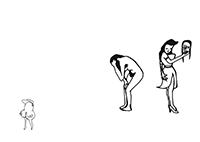
Mickry 3
ohne Titel
2008/2017
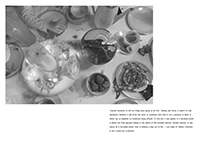
Maya Minder
Gasthaus: Fermentation and Bacteria
2017. Text: Maya Minder; Fotografie: Frowein; Editorial: Leila Peacock; Grafik: Susanne Richter
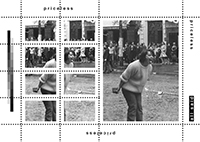
Rayelle Niemann
all said
February 2017. Quartier Latin, Paris, 5 May 1968. Photo: Manuel Bidermanas. Source: akg‑images, Internet. Technical support: Ashraf Osman. Font: 29LT Kaff
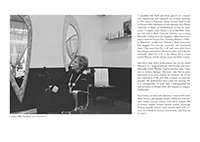
Caroline Palla
Somebody loves me
2015
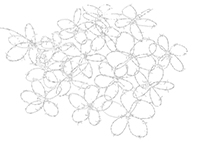
Ursula Palla
Flowers 16
2017
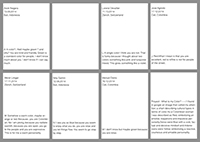
Katherine Patiño Miranda
What’s my color?
2014/15. Conversations with strangers in Zurich, Bali in Indonesia, and Cali in Colombia. This project took as a starting point Richard Lewis’ Cultural Types Chart
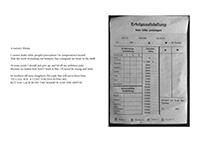
Leila Peacock
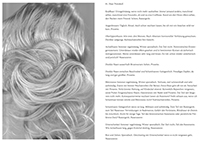
Linda Pfenninger
5 Mio. / #1. Haar Protokoll
2017. Bild: 5 Mio., Scan, Grösse variabel. Text: #1. Haar Protokoll
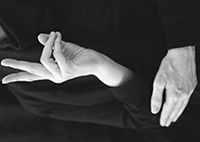
Cora Piantoni
Protest
2017
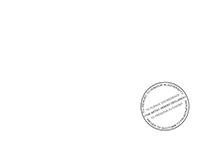
Annaïk Lou Pitteloud
THE ARTIST HEREBY DECLARES
2017
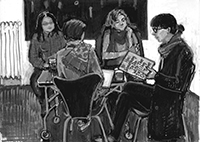
Maria Pomiansky
Curatorial Reading at Corner College
2017
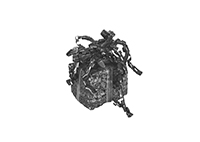
Elodie Pong
Try and stop me!
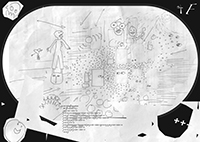
Isabel Reiss
2017
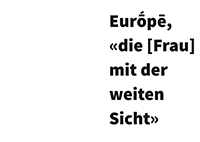
Marion Ritzmann
Eurṓpē, «die [Frau] mit der weiten Sicht»
2017
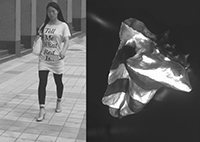
Ana Roldán
black and red
2017
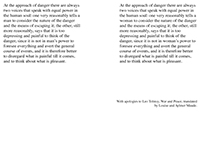
Aoife Rosenmeyer
2017

Dorothea Rust
Newton was a woman – hit gravity with apples
2017
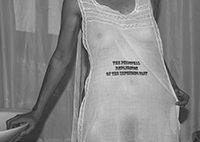
Eliane Rutishauser
The Perpetual Replication of the Impending Past
2016/17. Siebdruck auf Schürze / Fotografie. © Eliane Rutishauser

Margit Säde
24h woman
2017
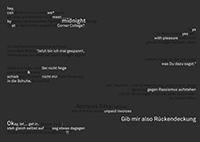
Saman Anabel Sarabi
Apropos Oma: she still has some unpaid invoices
2017. Deutscher Text: Auszug aus Noah Sow, Deutschland Schwarz Weiss. Der alltägliche Rassismus, 2009

Julie Sas
Handwritten copy of Lee Lozano Notebook 8, 5 April 1970, pp. 113-14 in my own notebook
2017
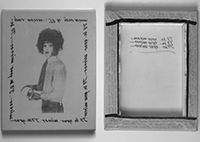
Lisa Schiess
I’LL BE YOUR MIRROR (PINK-ANDY)
2015. Andy Warhol, nach einer Fotografie von Christopher Makos, TA‑Magazin Febr. 1997. Vorderseite: Nitro-Handdruck, schwarzer Farbstift, Spiegelschrift mit permanentem Filzstift auf synthetischem Satin auf Baumwolle, auf Keilrahmen. 31 × 40 cm. Rückseite bearbeitet mit Acryl, Kugelschreiber und Filzstift. Songtext: «I‘ll be your mirror» von The Velvet Underground & Nico.
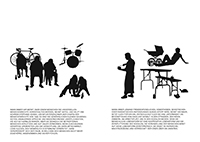
Annette Sense
Wann immer…
2017
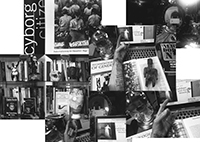
Dimitrina Sevova
The Evolution of Labor and Biopower from Witchcraft to the Industrialization of House Work to Cyborg Citizens. Science, Technology and Witchborg-Marxism in the Early 21st Century
2017
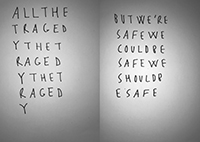
Francisca Silva
o.T.
2017. Stifte auf A4-Papier
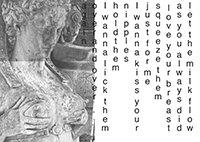
Veronika Spierenburg
Tits Fountain
2017. Quelle: unbekannt

Vreni Spieser
Goldbörtchen
2017. Zeichnung

Claudia Spinelli
Liberty
2017. Digitale Fotografie
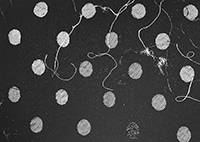
Marion Strunk
FadenFoto
2017
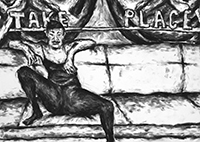
Milva Stutz
Take Place
2017. Kohle auf Papier, 32 × 45 cm
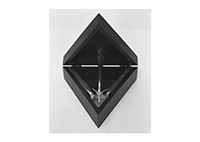
Una Szeemann
2017
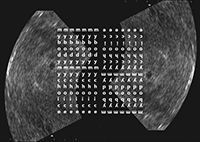
Lena Maria Thüring
mybodymychoice
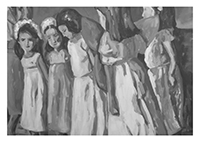
Yota Tsotra
Innocence Revised (The Beginning)
2016. Acryl auf Glasfaserngewebe
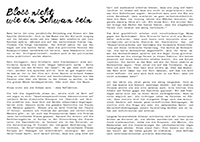
Jana Vanecek
Bloss nicht wie ein Schwan sein
2017
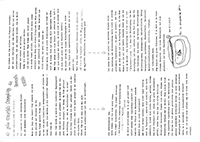
Anne Käthi Wehrli
a pin worth keeping in touch with
2017
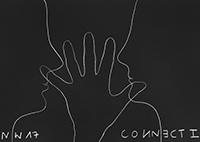
Nives Widauer
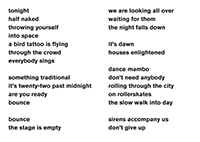
Martina-Sofie Wildberger
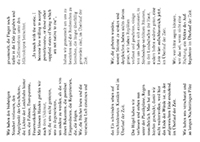
Angela Wittwer
Wir ist ein Pronomen
Zitat: Audre Lorde, The Uses of the Erotic: The Erotic as Power

Sophie Yerly
